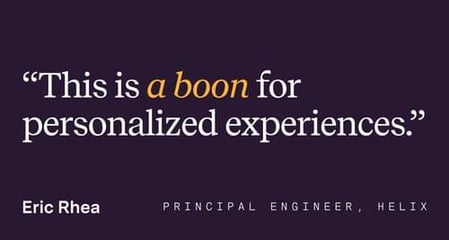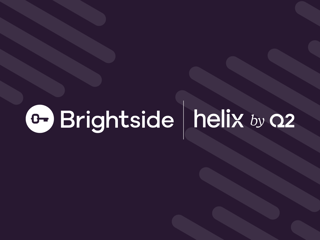What's SNBL?
Save Now, Buy Later (SNBL): The New Buying (and Saving) Experience for These Economic Times
10 min read

Ahon Sarkar
If you’re confused by the latest economic data, you’re not alone.
Aggressive interest rate hikes continue, while job growth defies estimates. Consumer spending was flat, then up, now down. The housing market is tanking, but home sales just hit a 10-month high. Is inflation rising or falling? Are we in recession or recovery? Forecasts that predict intermittent clouds and some sun are full of mixed signals.
What we can be certain about, though, is this: We’re operating (and living) in extraordinary economic uncertainty.
Sound advice is to save with discipline and spend with intention. Many Americans, though, aren’t doing either. And the impact is more than financial.
When too much of a good thing is not a good thing
Economic conditions are affecting financial and mental well-being at all income levels. According to a December Credit Karma study, 68 percent of American adults said their finances either didn’t improve or stayed the same in 2022.
The most common money mistake cited by respondents was “not saving money” (40 percent), while 35 percent said they fell into “bad habits” in 2022, including not sticking to a budget, overpaying for rent, losing money in stock market or cryptocurrency investments, and not contributing to retirement savings.
Money mistakes and the resulting financial anxiety take a major toll on our well-being. In fact, a study by the American Psychological Association found that financial matters are among the greatest sources of stress for people. A survey by U.S. News & World Report found that more than two-thirds of Americans experience financial anxiety from higher prices, inflation, and the burden of living paycheck to paycheck.
Fintech-fueled payments and lending innovations like Buy Now, Pay Later (BNPL) were meant to be paths to relief for those most vulnerable to financial insecurity, providing a bigger tent for the un- and under-banked—debt-adverse Gen-Z, heavily in debt Millennials, gig workers, and people with poor or no credit, to name a few.
BNPL was music to the ears of many consumers and consumer advocates. Usage started with a bang and boomed through 2022. But now?
BNPL is an attractive option for immediate gratification, and (seemingly) without the drawbacks of traditional credit cards: Purchase now, then pay over several interest-free installments. The appeal led to surging adoption beginning during the pandemic, when most consumers were flush with money and time. People bought sneakers, instant pots, and Pelotons with short-term, no-interest loans. Online shopping, increasingly with BNPL, was the national pastime.
The potential to overspend using BNPL is high though, and that’s especially bad news in an economy like this one. Amid inflationary pressures and a looming recession, overspending can lead to loads of trouble. Harvard Business School research found that BNPL drove a permanent increase in total spending of about $60 a week, stretching the average household retail budget 30 percent.
That makes BNPL increasingly risky business for many. According to BNPL company earnings reports, delinquencies are climbing as inflation puts a tightening squeeze on consumers. And it's harder than ever to pay off delinquent debt, especially for younger, less experienced borrowers. It can have a cascading effect on a person’s financial life and mental well-being.
“I’m bullish on SNBL because it’s good for people and smart for businesses.”
Embedded finance done right, right now
After hitting the market with a bang, followed by a post-COVID boom, is BNPL now tone-deaf in this economic climate? And what’s the next, right note for consumers, brands, and fintechs?
One answer is an embedded finance save-to-purchase model known as Save Now, Buy Later (SNBL). SNBL leverages high interest rates as a fast track to goal-based saving and encourages responsible spending for greater financial security. With incentives given throughout the savings period, people stay engaged with the brand as they save for their purchases. That means efficiencies related to customer acquisition costs and revenue generation that help businesses grow profitably.
Done right, I believe embedded finance has the potential to change the world. But getting there takes non-banks delivering banking products that solve real problems, like relieving the crushing mental toll of financial insecurity. That means not incentivizing overspending, and, instead, helping people get to their financial goals faster and more responsibly
When businesses use embedded finance to create something unique—offering value people haven’t seen before and keeping them using—they’re on to something great. When that value catalyzes usage across the brand’s core offering, the growth benefits are exponential. SNBL has the potential to do all that.
Save Now, Buy Later is for these economic times
I’m bullish on SNBL because it’s good for people and smart for businesses.
Here’s how it works:
Consumers save for big-ticket purchases with FDIC-insured savings accounts offered by a brand and its partner bank. Through incentives like above-market bonus interest rates and discounts not available anywhere else, the consumers’ savings and loyalty to the brand quickly grow. And so do the benefits to the brand.
By offering the above-market rates in points, miles (in the case of airlines), or discounts earned only if purchases are made with the brand, when those purchase are made:
- Consumers quickly reach their goals and purchase what they want, without high-cost debt—good for people.
- The cost of the incentives is offset by margins made on the purchases—smart for the brand.
In the event purchases aren’t made with the brand, and the consumer gives up the points, revenue earned on the interest goes to the top line.
The nice thing here is that it's a win in any scenario. Businesses can afford to give better, above-market interest on savings because they can blend the margin across the purchase transaction. So as a customer, I get a better rate than I could anywhere else while the economics work for the business.
Long-term financial well-being
For the buyer, immediate gratification is delayed in exchange for those savings-building incentives and debt avoidance. Good money habits are formed while buyers stay engaged with the brand. That’s good news and good for business, increasing customer lifetime value and loyalty by incentivizing more people to spend—responsibly.
Long-term profitable growth
When goals are reached, and the money is used for in-brand purchases, businesses increase conversion and lower acquisition costs. It also effectively flips the script on traditional marketing. Marketing dollars can be used more cost-effectively to up the incentives, likely yielding far better marketing results compared to less targeted campaigns.
SNBL builds brand affinity and increases new-customer acquisition earlier in the consideration journey. That’s particularly important for high-ticket purchases—cars, home mortgages, travel, and jewelry, for example—when prospective buyers are spending months browsing the internet before purchasing. When brands only have a few chances to engage with the customer, an SNBL program offers more consistent ways to stay top-of-mind.
It's all a fast track to profitability, and a win all around.
There are compelling SNBL use cases across verticals—for home Improvement brands, travel brands, luxury brands, mortgage lenders, car manufacturers, and homebuying websites. Here’s how two SNBL programs could work.
Home Improvement Retail Brand
The problem
Customer problem: Millennial homebuyers planning small kitchen remodel don’t qualify for a loan based on project scope.
Brand problem: High customer acquisition and retention costs make it costly and difficult to drive profitable growth.
The solution
Solution: An SNBL goal-based, FDIC-insured savings account for appliance purchases—packed with incentives to achieve the goal and purchase from the retailer, like bonus interest and discounts.
When the account is fully funded, the customer qualifies for free delivery and discounts on the transaction (worth more than what the customer would have earned by saving anywhere else).
The path to long-term loyalty: If customer also opens a DDA account with debit card from the retailer, it rewards with personalized discounts when the card is used for ongoing store purchases.
Commercial Airline
The problem
Customer problem: Newly engaged Gen Z couple is planning honeymoon in nine months but doesn’t want to incur credit card interest and fees.
Brand problem: Difficult to increase usage and profitability of existing loyalty programs.
The solution
Solution: An SNBL program with market-leading interest rate, paid in miles and worth more than flyers could earn in cash somewhere else, encourage saving toward purchases with the airline.
The path to long-term loyalty: Customers who purchase trips with their savings balances earn incentives (waived baggage fees, seat upgrades, priority boarding).
Let’s talk about your goals
SNBL is a fast track to savings for people and sustainable growth for businesses. For many brands and fintechs, it’s a smart solution for these economic times.
But like any embedded finance program, just because you can build it doesn’t mean you should. Let’s connect to talk about your goals for profitable growth and if an SNBL program hits all the right notesfor you and your customers.

Ahon Sarkar
Ahon Sarkar is GM of Helix. He leads the Helix team in its mission to make finance human.
Ahon writes here from a perspective informed by his experiences:
- Leading Helix Working at Bridgewater, the world’s largest hedge fund
- At Cambr, bringing to life one of the first banking-as-a-service providers
- Studying economics at the University of Chicago





